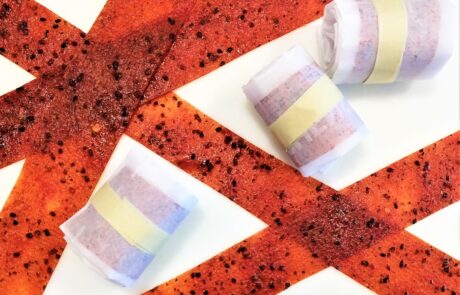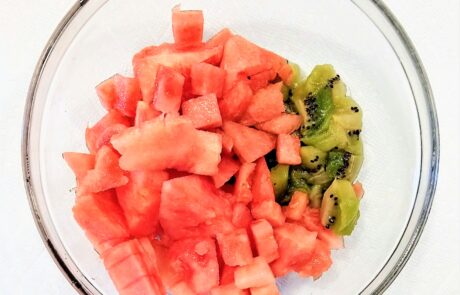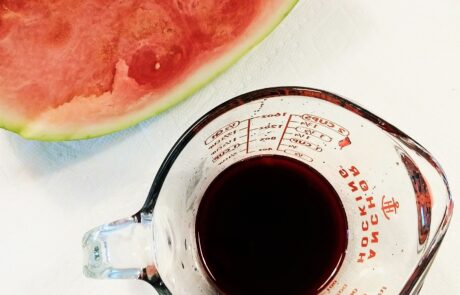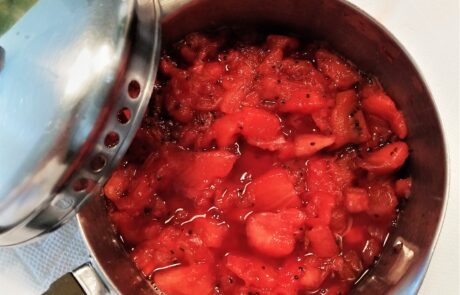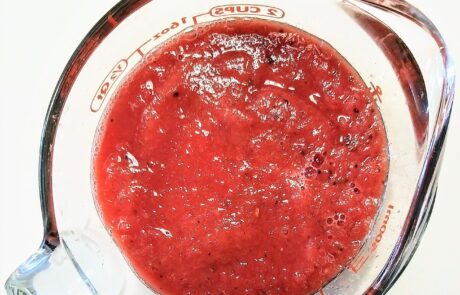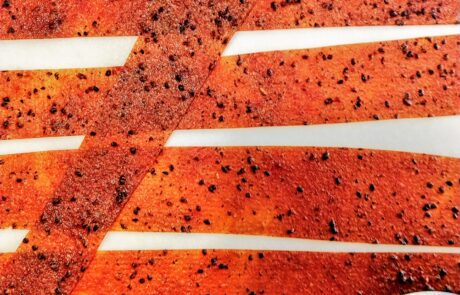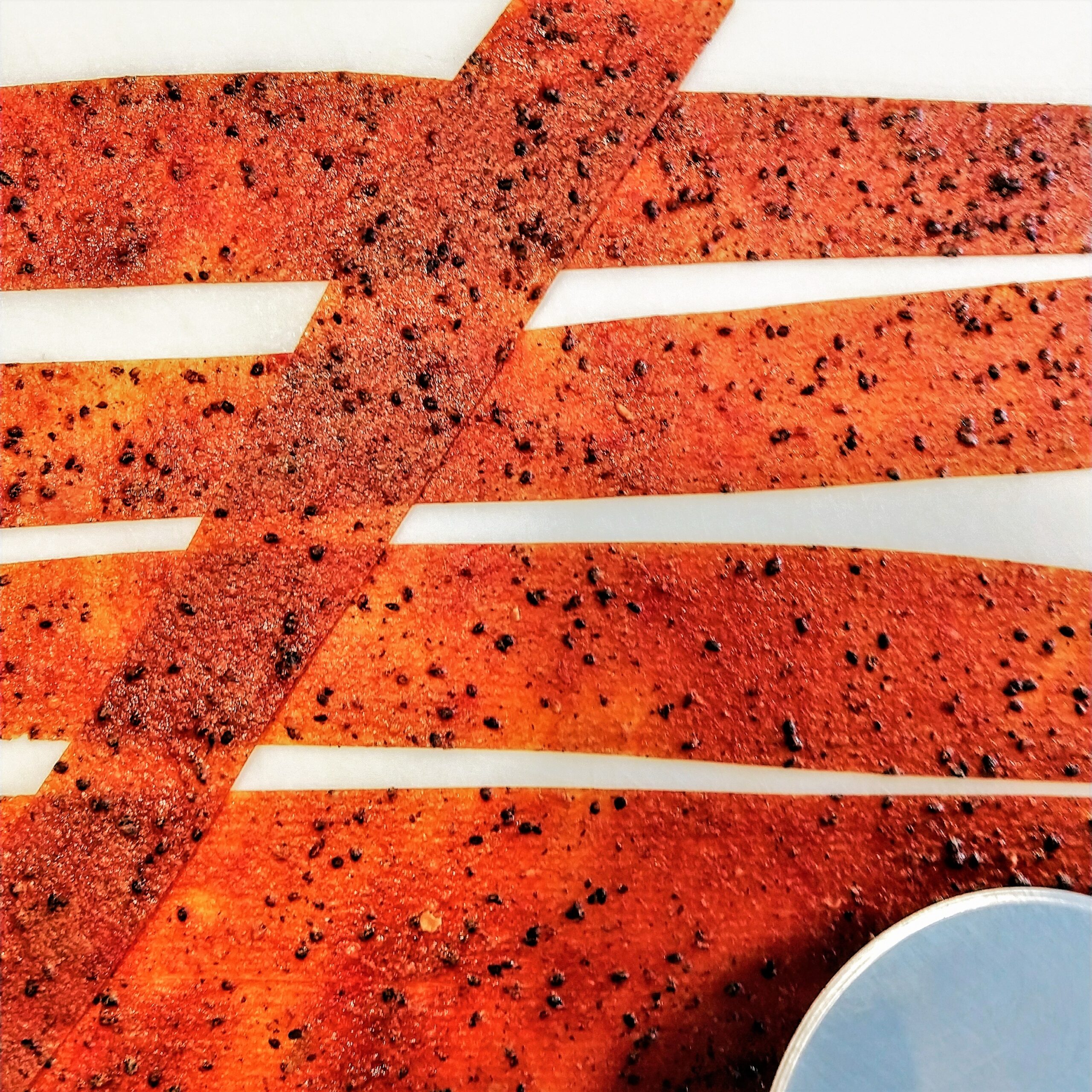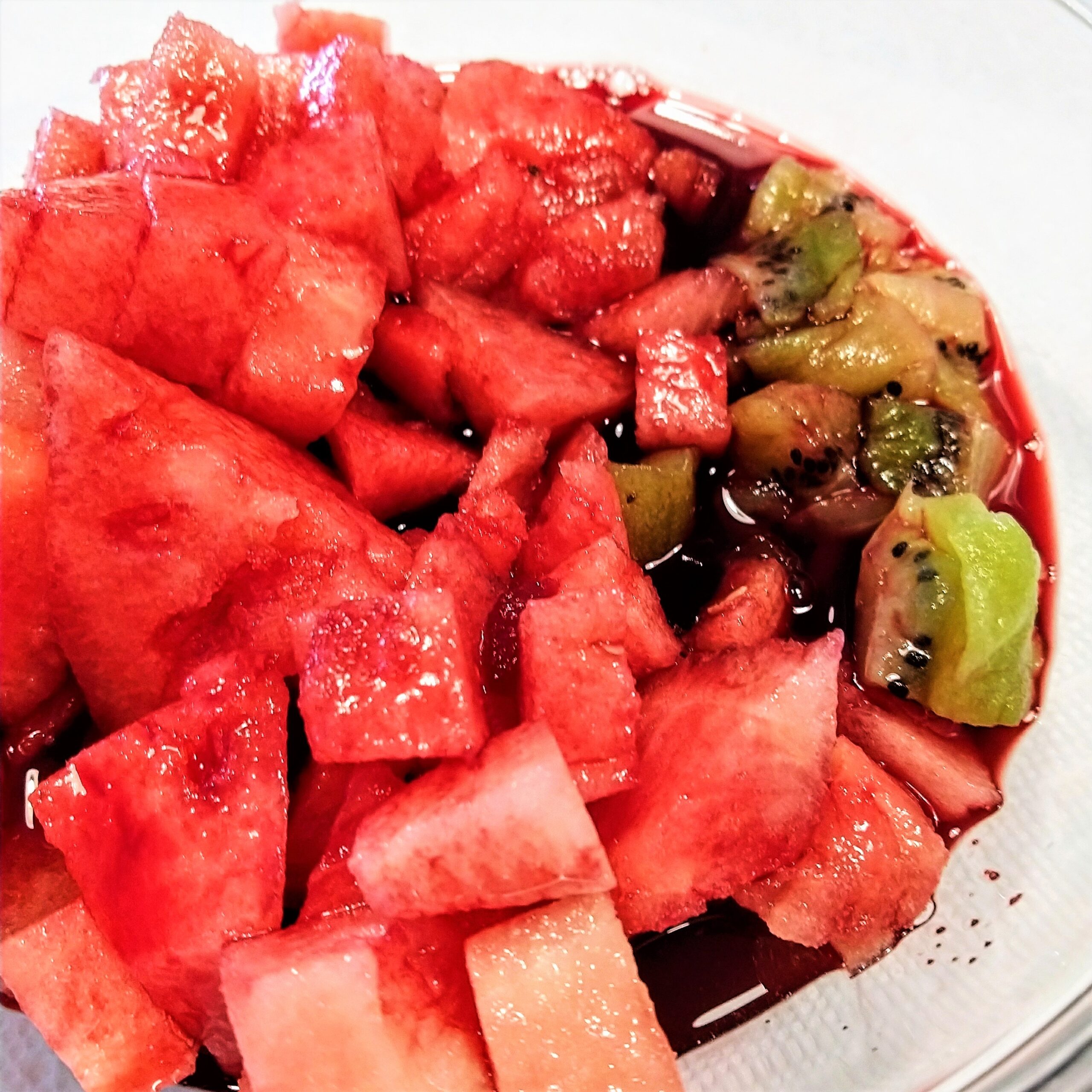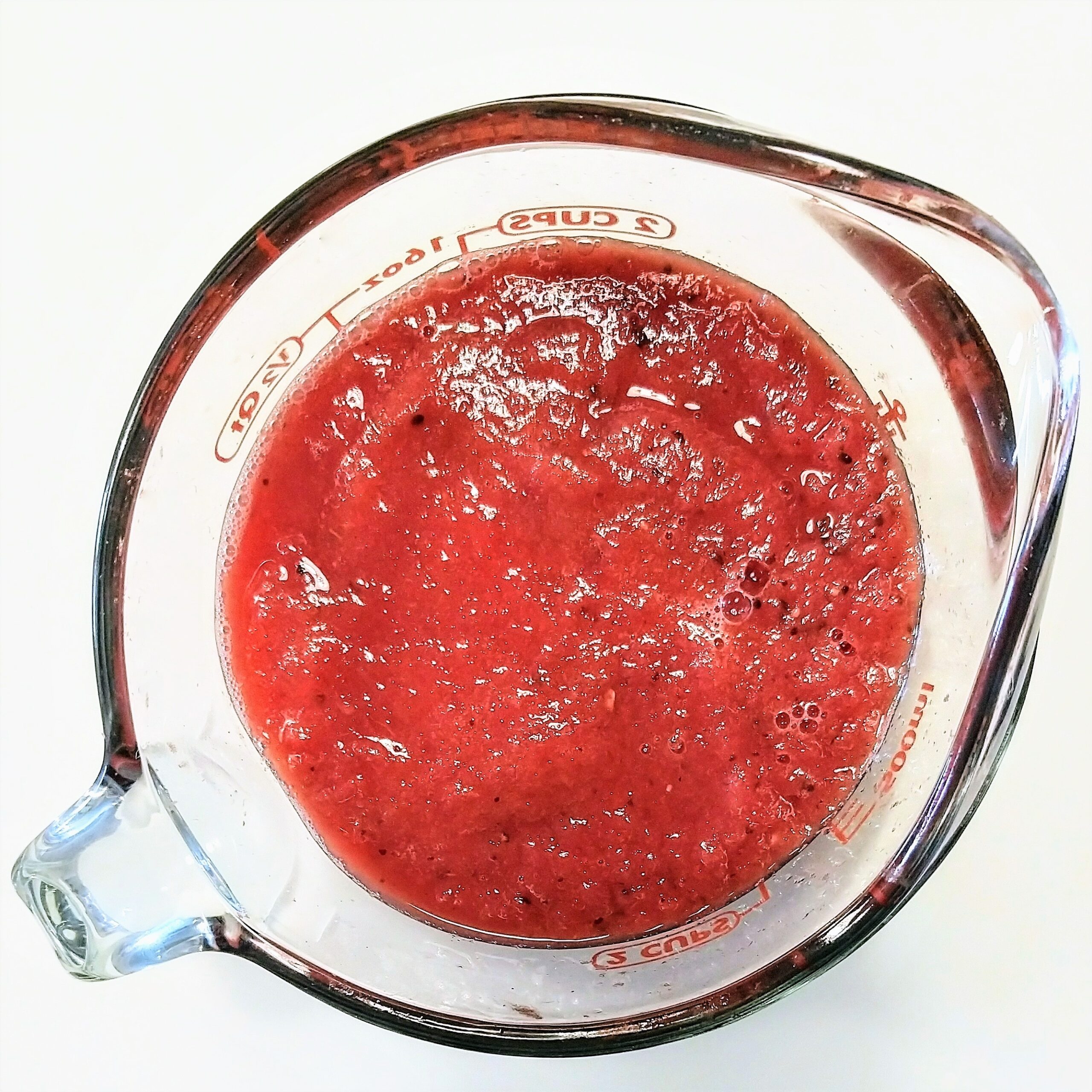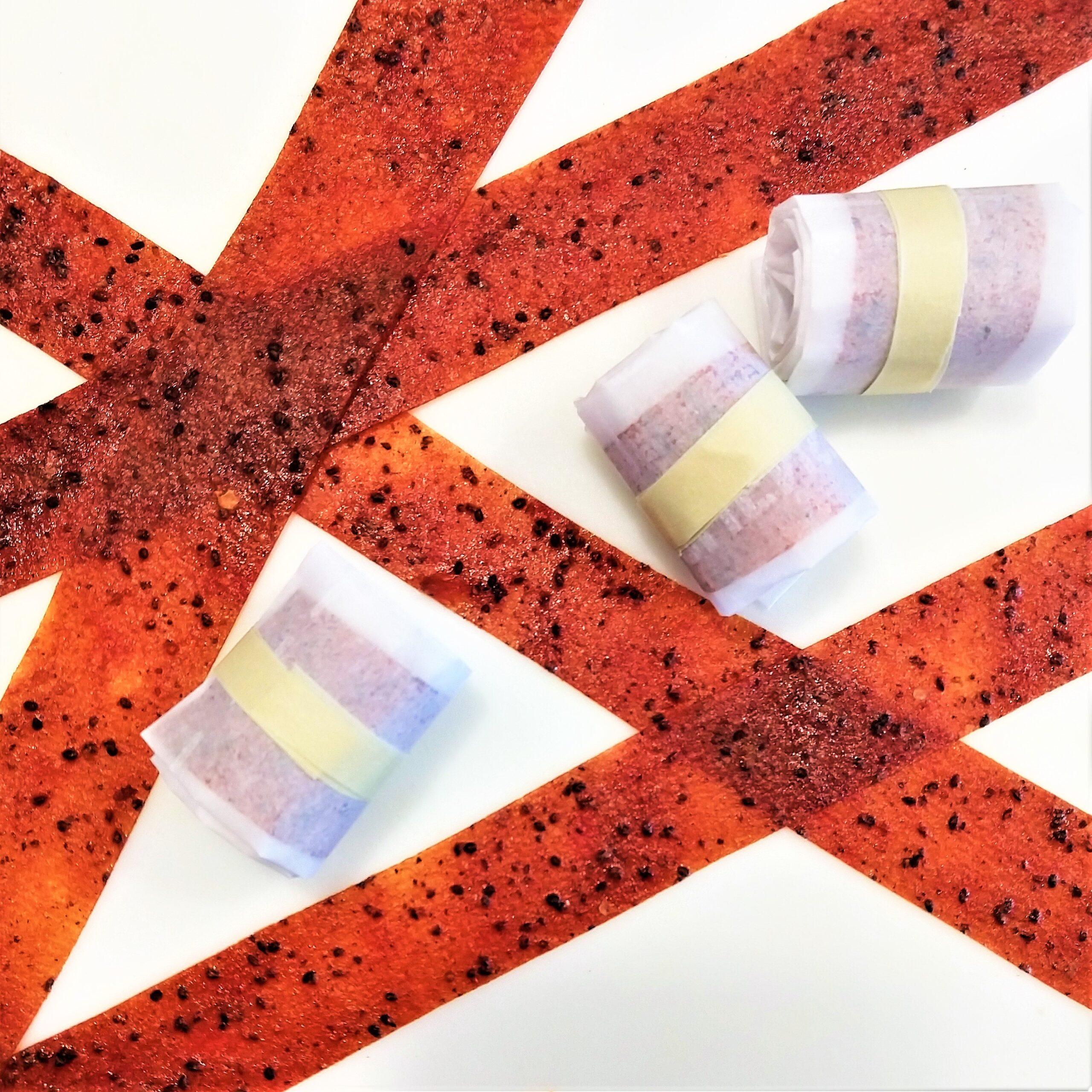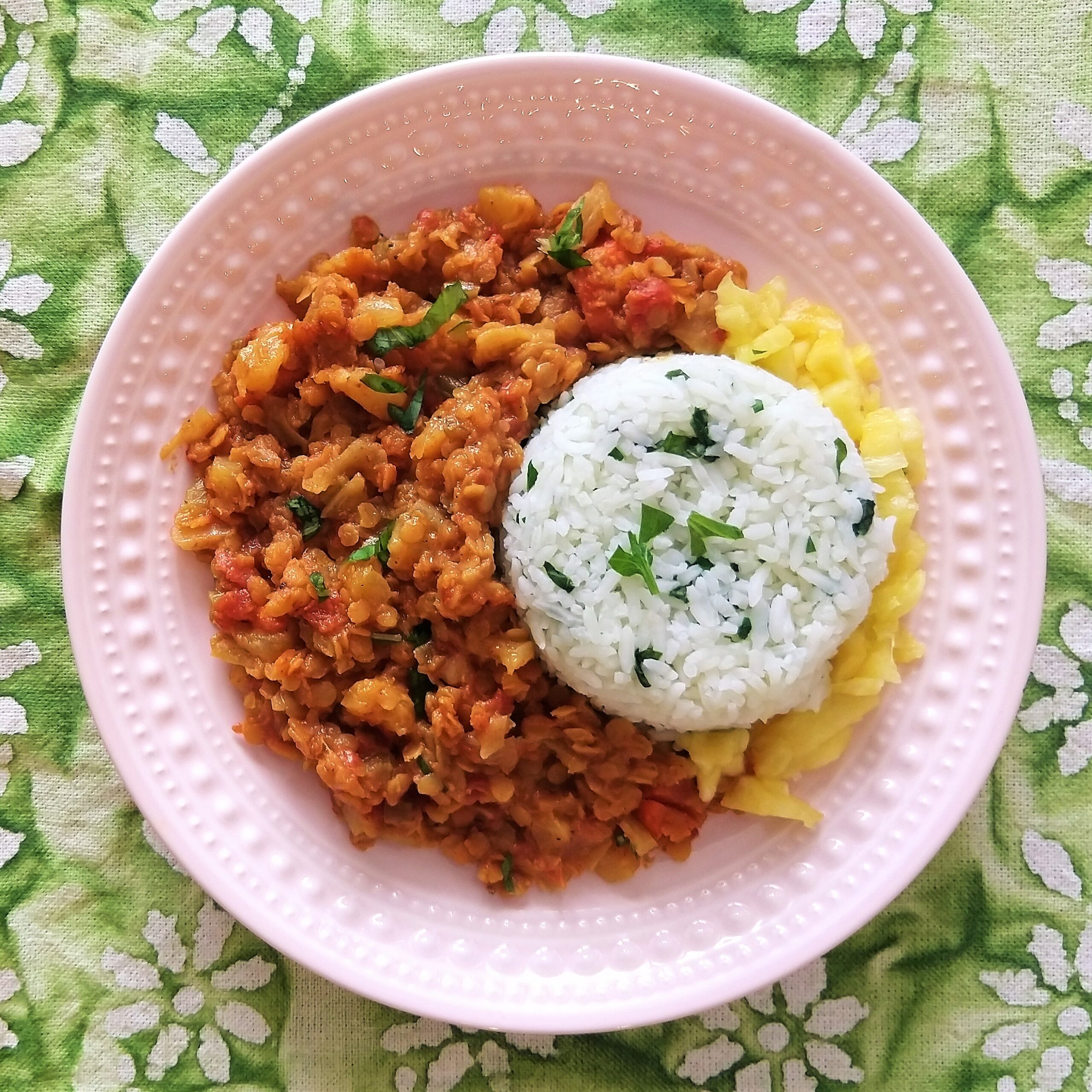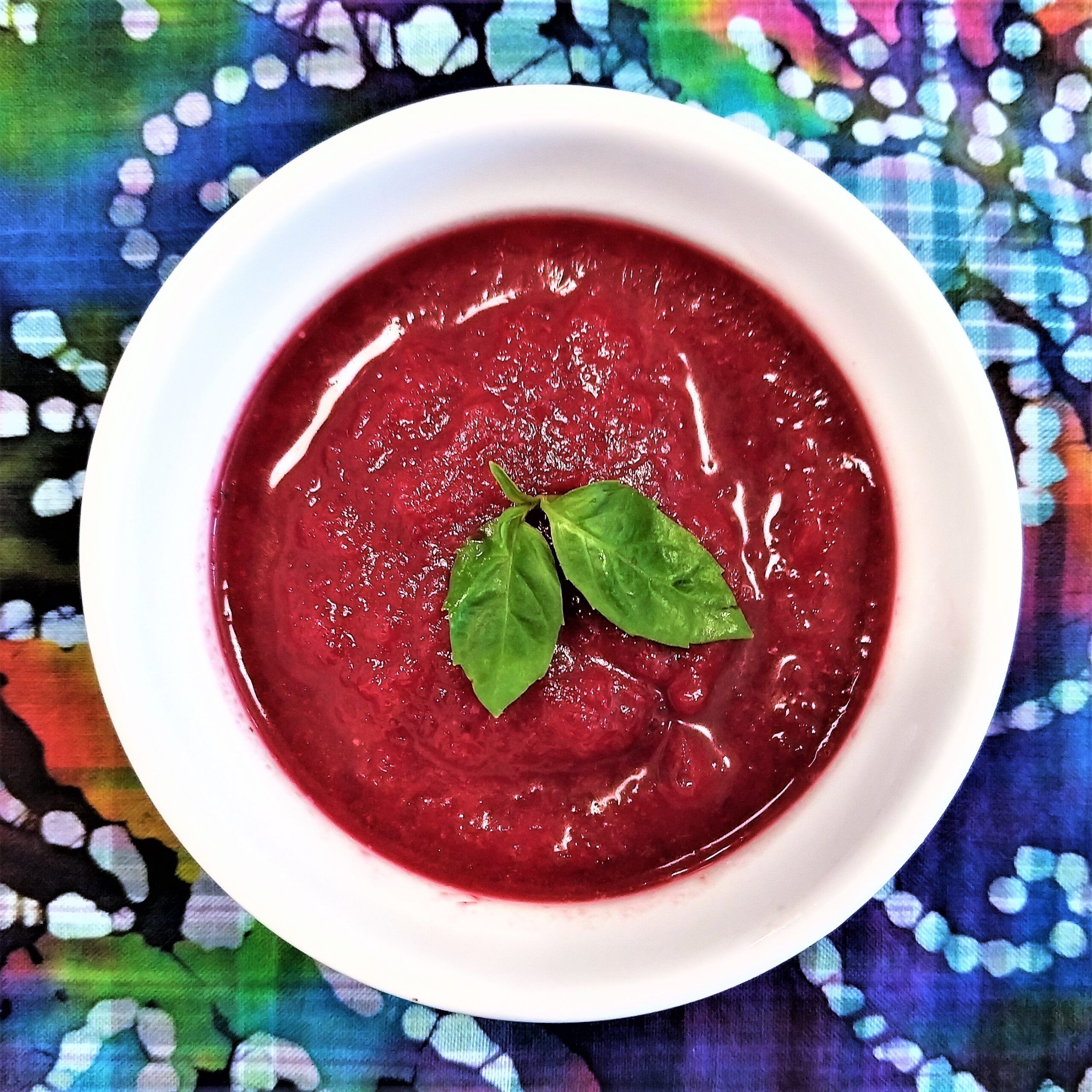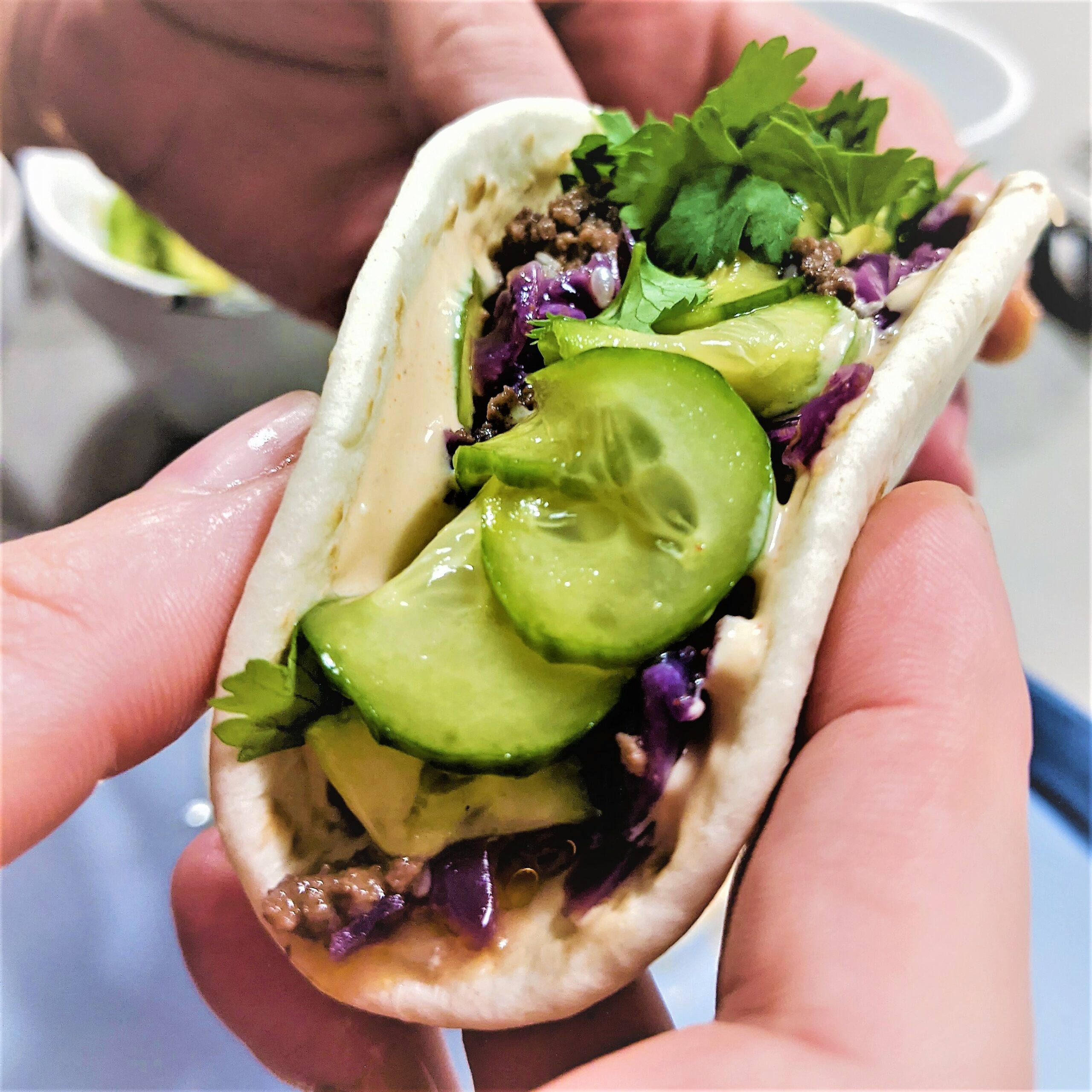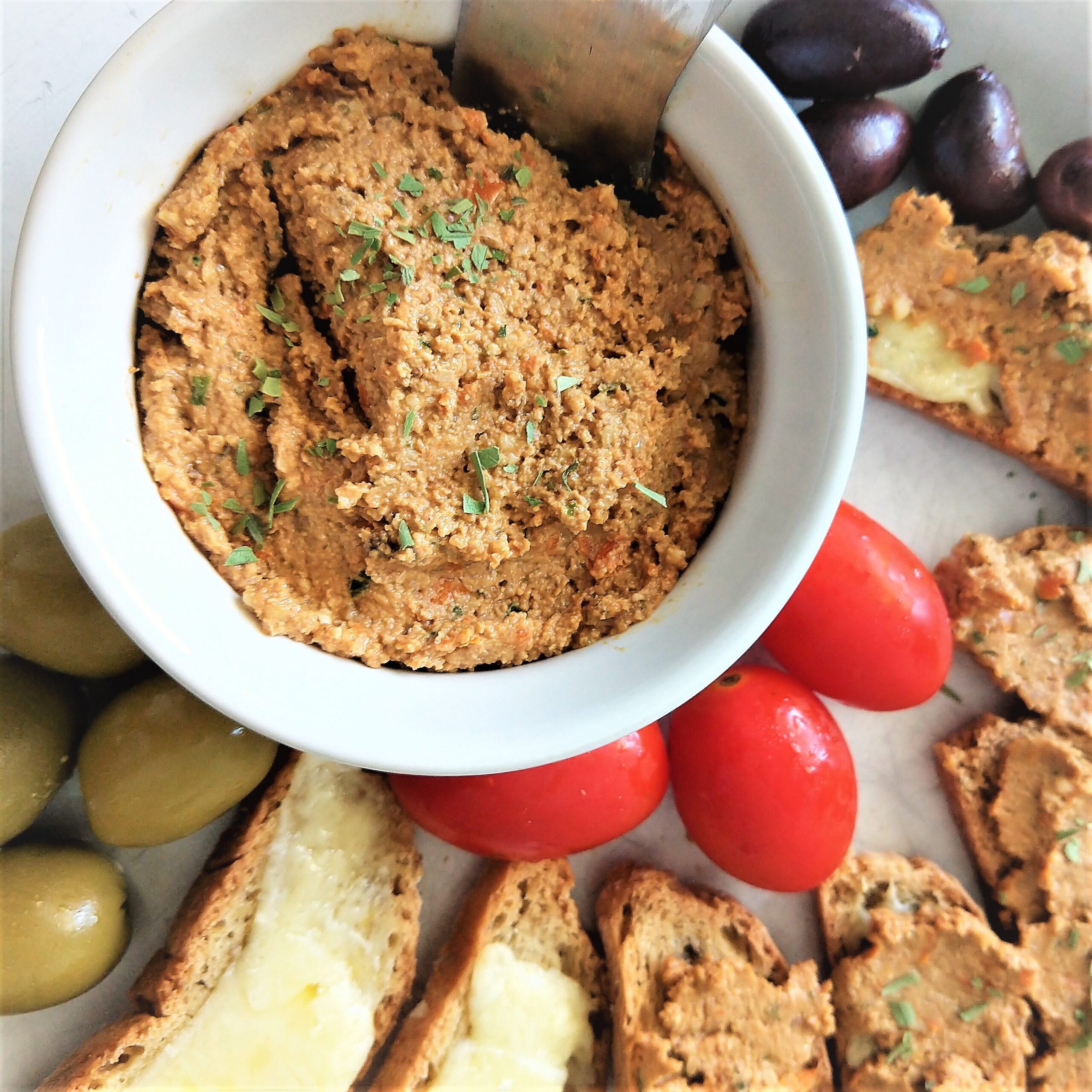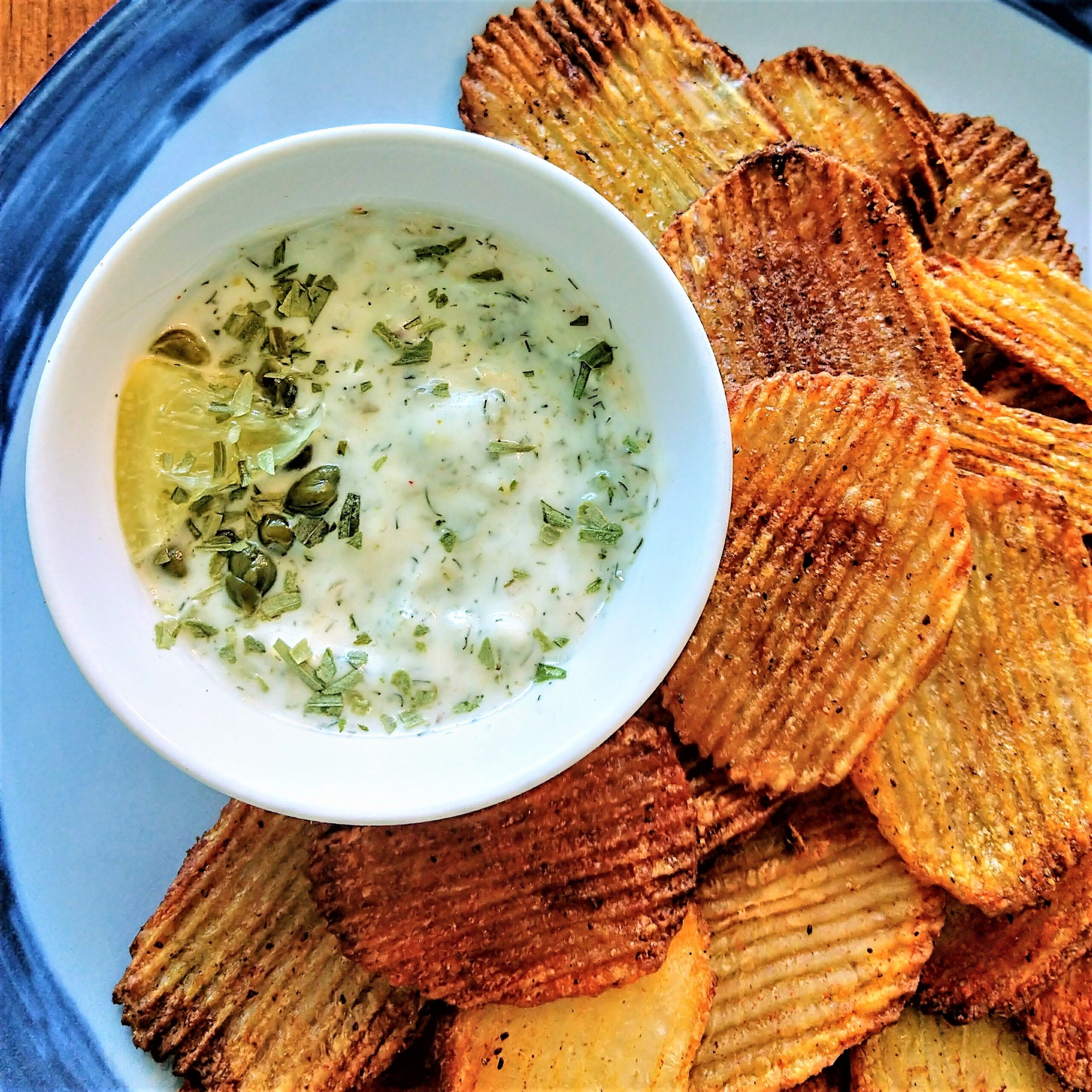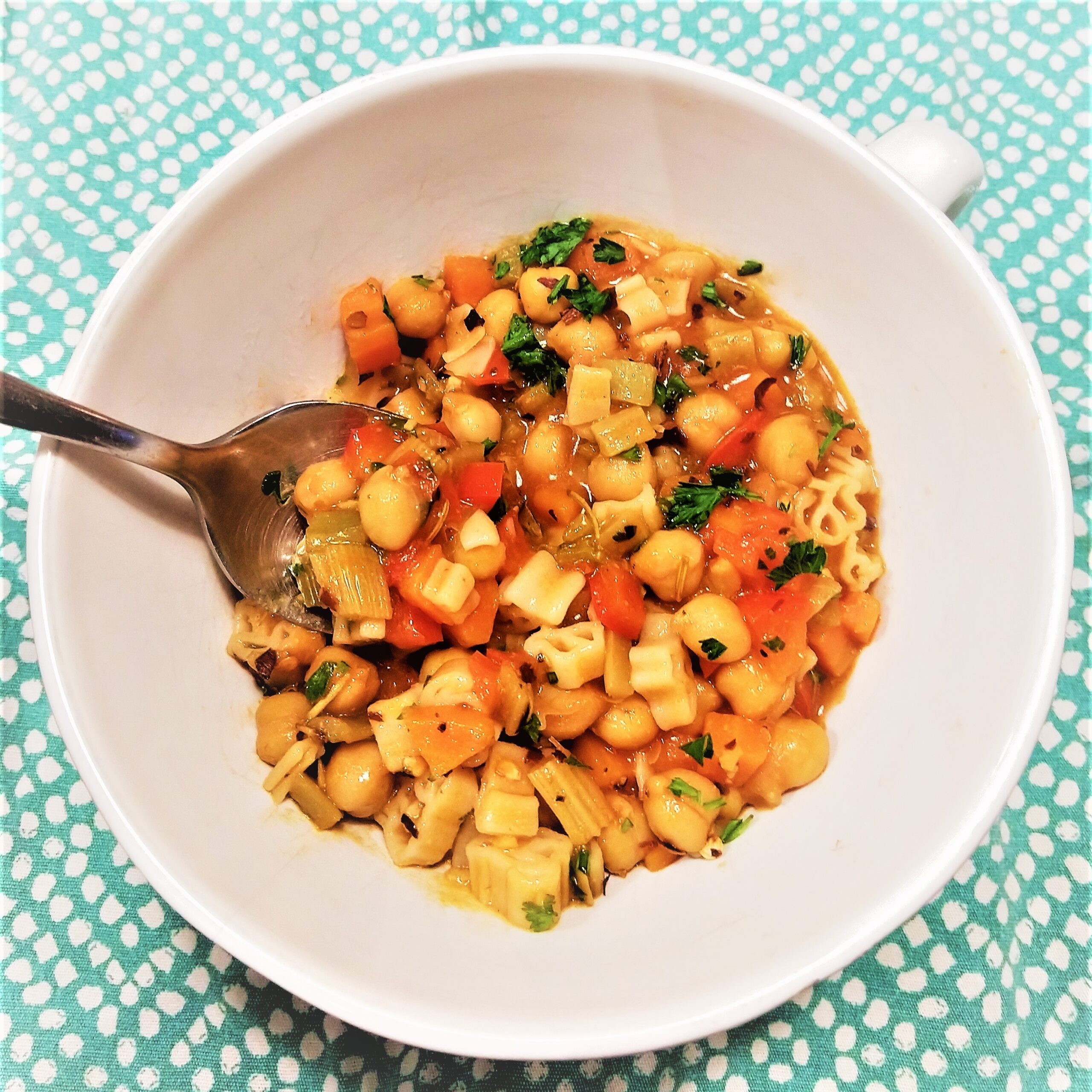In our household of two, it takes dedication to get through a whole watermelon. It’s even trickier with a lackluster melon (and can we all agree that seedy melons taste best?). Ever since I’ve gotten hooked on making homemade fruit leather, less fruit goes to waste in our house! After some careful experimentation, we now turn excess watermelon into healthier versions of Fruit by the Foot™ or Fruit Roll-Ups™ that don’t include all that plastic trash. For our upcoming vacation, we have compact, portable snacks to take through the airport instead of bulky containers of fruit. The resulting juice can also be made into a syrup for summer-y drinks, too!
WATERMELON LEATHER HIGH
Prep:
20-30 min
Cook:
7 hrs
Total:
7.5 hrs
Makes 7 servings, going with each being about 1 x 12 inches long using 9 x 13 inch baking tray (~22.86 x 33.02 cm).
INGREDIENTS:
- 2 heaping liquid cups (~500 ml) of puree*
- 2 tsp lemon or lime juice**
- ½ cup (~118 ml) liquid (water, beet juice for color, etc)
*Can reach this volume with 4 cups diced watermelon (~608 g) and ~1 cup chopped kiwis (~108 g). Use 5 cups of watermelon if you want it to be watermelon-only (~760 g)
**To brighten flavor, assist in preservation, and maintain color. You could also sub in 2 tsp apple cider vinegar.
[Optional]
- granulated sugar/sweetener in case your puree is very tart. Normally the fruit’s sweet enough on its own, even with the acids (they mellow out in the oven). Don’t use honey, syrups, or any sweeteners that are liquid at room temperature.
- fruits with little edible black seeds, like kiwi or dragonfruit, which add a visual pop. Dragonfruit is very mild; kiwi gives that punchy “watermelon-kiwi flavor.” I live in FL, so tropical fruit is affordable here.
STEP BY STEP:
MORE TIPS & TRICKS
- If you try to increase the volume with something like beets, I wouldn’t recommend using more than ¼ cup of pureed beets. If you have some pickled beets on hand, they can add nice color but you should refrain from adding any extra acid and definitely add at least 1 tbsp sugar.
- If you only have raw beets, use 1 small (think golf ball sized) beet. Peel it and slice it as thinly as possible during Step 2, then follow all the same steps.
- Other natural ways to make your fruit leather a deeper pink in color: using pomegranate juice instead of water, or liquids made from blackberries, strawberries or blueberries. Or you can add a little red food coloring for that extra 90’s vibe. Obviously, none of this is necessary, but there are so many fun ways to experiment!
- If your puree is significantly looser and more watery after blending, you can run in through a sieve or drape a cheesecloth over a bowl and let it rest for 20 minutes. Some watermelons are a lot more fibrous than others, so it’s important to strain out as much liquid as possible before blending.
NUTRITION FACTS
Number of Servings: 7
Fiber: 0.2 g
Carbs: 9.4 g
Calories per Serving: 40 kcal
Sugar: 8.7 g
Protein: 0.2 g
Weight per Serving: 12 g
Fats: 0.3 g
Iron: 0.1 mg
All servings and nutritional measurements are approximate and will vary according to ratios of fruit (or even vegetables) used. These estimates are intended for information and guidance purposes only. Please consult a licensed nutrition or medical professional if you need assistance.
Gluten-Free and Vegan Disclaimer: All of the ingredients listed in this recipe are available in gluten-free and vegan versions. Please do your research and verify ingredient lists, as many products can have surprisingly hidden amounts of gluten that can impact those with Celiac Disease and gluten allergies. Likewise, vegans may need to verify if products contain hidden amounts of whey or animal derived ingredients.

